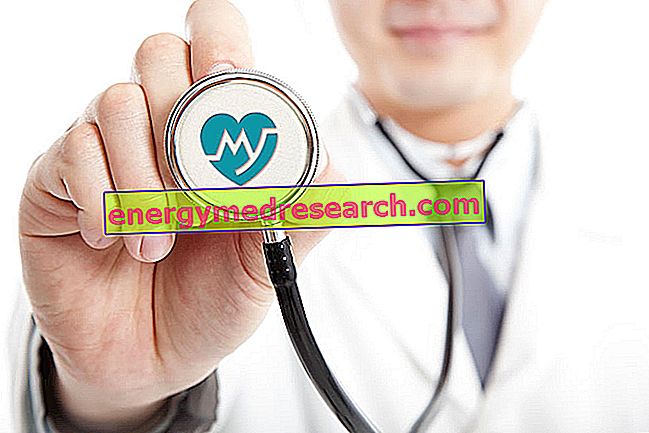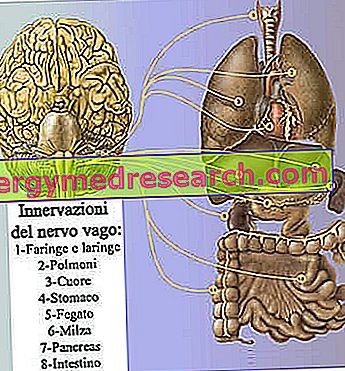Salmonella and Salmonellosis
Salmonella is a genus of small rod-like bacteria, movable and gram negative, asporiginal and widely distributed in nature. Their name derives from that of the veterinary pathologist - Daniel Salmon - who first isolated the species Salmonella choleraesuis from the intestine of a pig.

Some infectious agents, other than those treated in this article, are responsible for typhoid fever, common in developing countries; the transmission of this disease can occur through contaminated food but also by direct contact between the patient and the carrier.
Epidemiology
Since the incidence of salmonellosis is increasing in almost all industrialized countries, it is very important to adopt precise preventive regulations. This phenomenon can be explained on the basis of various elements, such as the selection of antibiotic-resistant strains, the massive importation of meat and livestock with the introduction of serotypes typical of other areas, the spread of intensive farming, the use of animal meal and greater use of collective catering.
Contagion and risk factors
The primary habitat of Salmonella is the intestinal tract of various animals, which eliminate them outside along with the faeces. Through the excrements emitted by men, birds, reptiles and domestic and farm animals, the salmonella spread in the external environment, contaminating food and water.
Foods at risk
- Eggs, raw or undercooked poultry
- Fish, crustaceans, molluscs
- Sauces or creams based on raw eggs; unpasteurized products
Notes: generally, food contaminated with salmonella does not have organoleptic alterations (color, smell, taste, consistency).
Beyond the intestinal tract, salmonellae can also be found in other tissues, including meat. They multiply, for example, in the hen's egg, due to contamination of the animal (spread of infection at the ovarian level) or due to porosity of the shell contaminated by faecal material. Milk and seafood are also considered to be food at risk.
Salmonella infection is widespread especially in the summer season and prefers communities such as hospitals, schools, colleges, rest homes, barracks or other environments where collective catering is carried out.
Any food handled by people who are poorly disposed to hygiene and infected (clinically ill or asymptomatic carriers) can be a source of infection. In particular, so-called cross-contamination is frequent, for example between raw and cooked foods, between meat and vegetables, following errors in handling and storage.
Risk factors
- Eat raw or undercooked seafood.
- Do not wash your hands after handling uncooked foods, animals or faeces.
- Consume unpasteurized milk.
- Do not store food carefully, for example, keep eggs and egg products at room temperature.
- Food handling by infected people.
- Alteration of intestinal microbial flora
- Gastrectomy, antacid drugs
- (increased gastric pH)
- Inflammatory diseases e
- intestinal neoplasms
- immunosuppression
- Recent use of antibiotics
- Corticosteroid therapy
- Babies, infants, elderly
- Overcrowding, precarious
- hygienic conditions
Salmonella is sensitive to chemical and physical agents. If it occurs at temperatures below 5 ° C, refrigeration prevents bacterial multiplication without killing the microorganisms. In addition to preventing growth, freezing causes moderate salmonid inactivation. Cooking food, on the other hand, drastically reduces the risk of infection, since bacteria are destroyed by heat. However, as mentioned, the salmonella can pass on tables, hobs, cutlery and plates, then move to other foods during the preparation phases.
A reduced gastric acidity, the alteration of the normal intestinal bacterial flora and concomitant neoplasms or enteric inflammatory diseases, constitute the main risk factors related to the host.
Symptoms and complications of salmonellosis
To learn more: Salmonella symptoms
Primary salmonellosis, with exclusive localization to the digestive tract (called "minor salmonellosis"), causes gastroenteritis; only in the most serious cases it causes septicemia with extraintestinal manifestations (arthritis, osteomyelitis, pneumonia, meningitis, endocarditis, etc.). The endotoxins released by salmonella cause nausea, abdominal cramps and diarrhea with liquid stools, mixed with mucus and sometimes small amounts of blood. Possible also the presence of fever (38-39 ° C) and vomiting. Normally, salmonellosis symptoms appear after an incubation period of 12-48 hours. As stated in the previous paragraph, the intensity of the symptom picture is very variable, but in general the symptoms of the infection disappear within 4-7 days.
Mortality from salmonellosis is extremely low; most at risk are newborns and infants, the elderly and those already weakened by other diseases, such as AIDS patients. In fact, pathogenicity depends on the virulence of the serotype, the bacterial load and the health conditions of the host.
Diagnosis, prevention and therapy
Diagnosis
The diagnosis of salmonellosis is made by coproculture (faecal culture test).
Trattmento
To learn more: Salmonella Treatment Medications
Salmonella gastroenteritis is generally self-limiting and the symptoms spontaneously subside within a few days. The main therapeutic measure is represented by the generous rehydration of liquids and mineral salts lost with diarrheal discharges. Given the ineffectiveness in improving the course of salmonellosis and the danger of drug-resistance, antibiotic therapy is administered only to elderly or debilitated subjects, to children under two years of age, to immunosuppressed patients and to patients with severe forms.
Due to the high risk of contagiousness, salmonella gastroenteritis is subject to mandatory reporting.
Prevent Salmonellosis
- Wash your hands thoroughly before touching the food in preparation, after coming into contact with animals and especially with their feces.
- Do not consume raw or undercooked meat, eggs and poultry. Pay attention also to foods containing sauces or creams based on raw eggs (mayonnaise, tiramisu, etc.).
- Do not consume eggs with a broken or dirty shell.
- Keep the eggs and all the fresh foods (mayonnaise, creams, sauces) at 4 ° C, preferably consuming them as soon as they are prepared, without keeping them for a long time.
- Avoid cross-contamination between infected foods, keeping raw meat separate from cooked ones and thoroughly washing all utensils used to handle raw food.
- Do not eat raw or undercooked eggs or meats.
- Wash vegetables thoroughly with drinking water before consumption.
Salmonella - Video: Contagion, Symptoms, Cures
X Problems with video playback? Reload from YouTube Go to Video Page Go to Wellness Destination Watch the video on youtube



